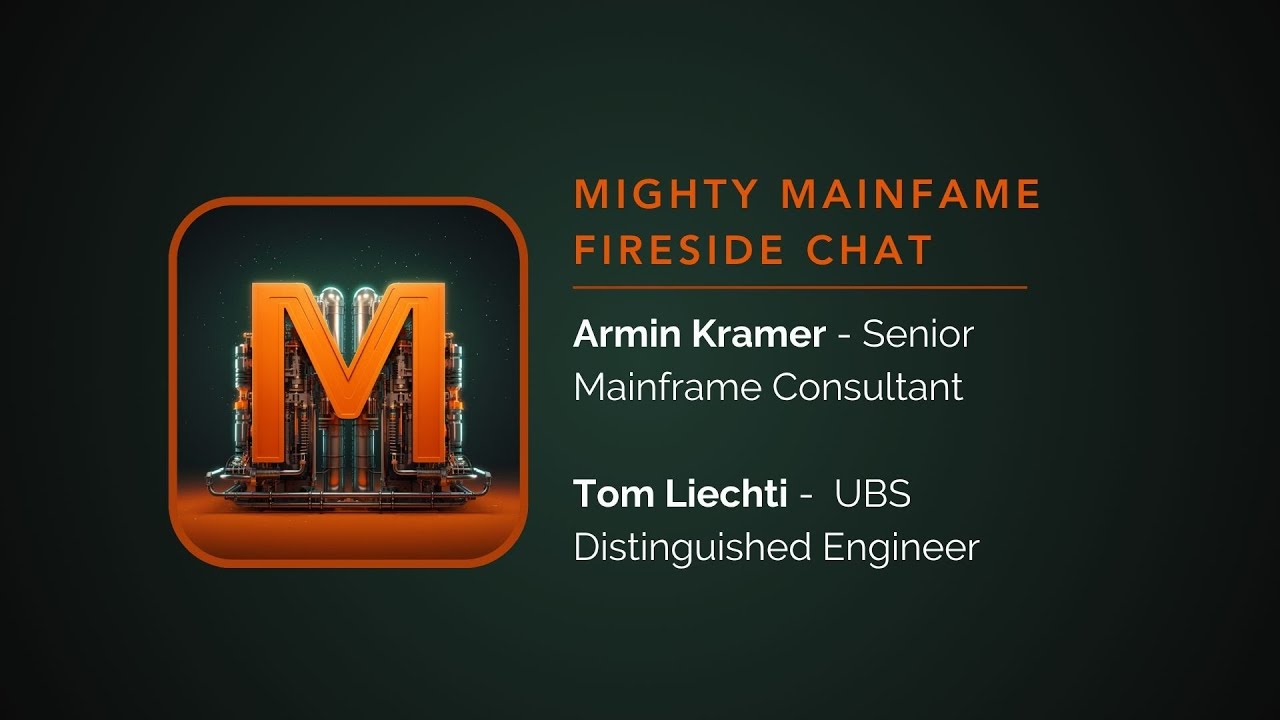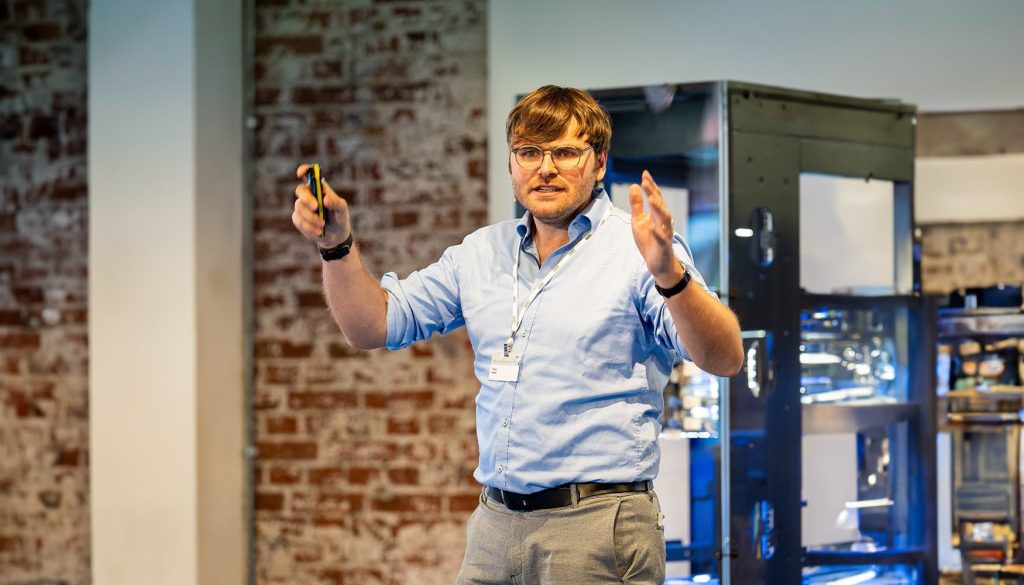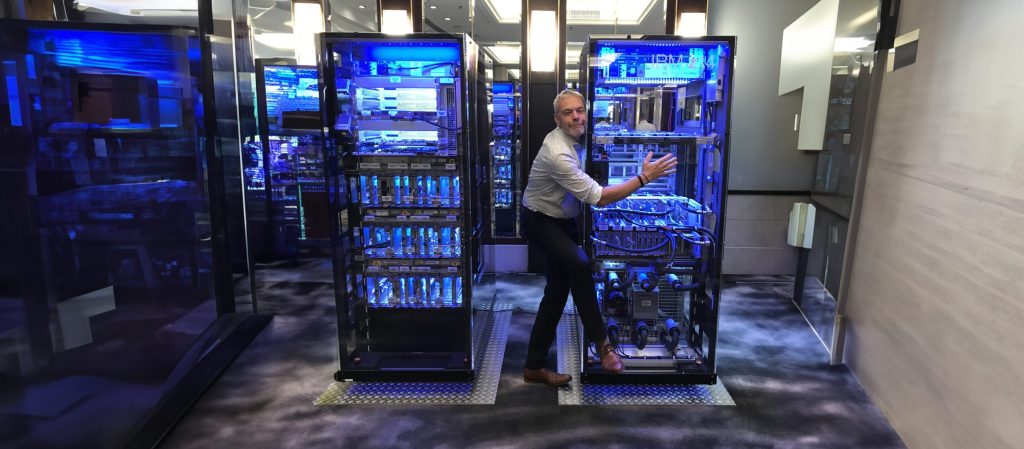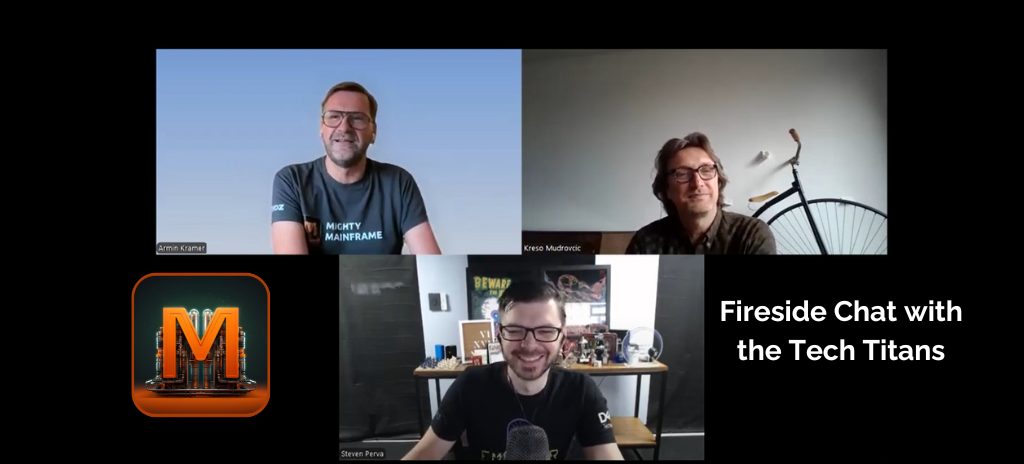We’ve got a new Mighty Mianframe Fireside Chat, and this one is a crisp, 15-minute masterclass in pragmatic mainframe modernization. Host Armin Kramer sits down with Tom Liechti, a longtime COBOL expert at UBS in Switzerland, for a candid conversation about how to modernize without losing the strengths that make the mainframe indispensable.
What this episode is about
This isn’t a nostalgia trip. It’s a clear-eyed look at how a major bank:
- keeps COBOL relevant and productive,
- grows new talent consistently,
- and upgrades the developer experience so it feels like any modern stack, only on the mainframe.
Armin guides the discussion while Tom brings more than 25 years of COBOL experience as a developer, trainer, and community lead for hundreds of engineers worldwide.
Solving the talent pipeline by building it
UBS didn’t wait for universities to catch up. Two decades ago, they launched an internal apprenticeship program called IT Way Up, a two-year track where new hires learn COBOL from day one while also studying modern fundamentals such as web development, databases, and Java. The outcome is a steady flow of motivated developers who see COBOL as a powerful, clear, and surprisingly fun language, especially when paired with today’s tooling.
Modern DevOps on the mainframe: Git, CI/CD, and flexible tooling
This is where modernization becomes second nature:
- Git and GitLab as the standard flow
- CI/CD pipelines for build, scan, test, and deploy
- Automated releases to managed environments
- Developer-friendly editors like IBM Developer for z or VS Code (most prefer VS Code, and yes, dark mode counts)
UBS has been connecting classic and modern worlds by wiring pipelines directly into existing mainframe workflows. They’re also taking the next step, moving away from ChangeMan toward IBM Dependency Based Build (DBB) and updated deployment tools that simplify builds and promotions even further.
AI’s role: assistant, not replacement
Tom is clear about this. AI supports engineers; it doesn’t replace them. When you’re staring at hundreds of thousands of lines of legacy code, AI can help by mapping dependencies, summarizing intent, surfacing redundancies, and suggesting modernization paths such as “this should be a REST API now.” Engineers stay in control. AI simply accelerates understanding and reduces risk.
Why this matters
The message is straightforward. COBOL and mainframes aren’t relics. They’re living platforms that continue to power critical systems. The key is to stop working like it’s still the 1980s. With modern practices and tooling, modernization becomes part of the daily routine, not a massive one-time effort.
Key takeaways
- Modernization starts with workflow. Once DevOPS is standardized with Git, CI/CD, testing, and scanning, COBOL becomes just another language in the toolchain
- Build your own talent pipeline. Apprenticeships outperform waiting for the market to deliver ready-made developers.
- Bridge first, then evolve. Integrate with existing mainframe processes before moving to DBB and modern deployment tools.
- Use AI wisely. Treat it as an accelerator for understanding and refactoring, not a silver bullet.
Falls Sie Fragen haben, sind wir nur einen Klick entfernt.




